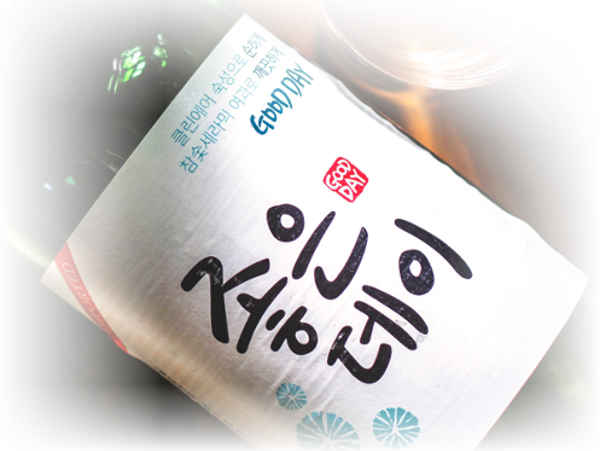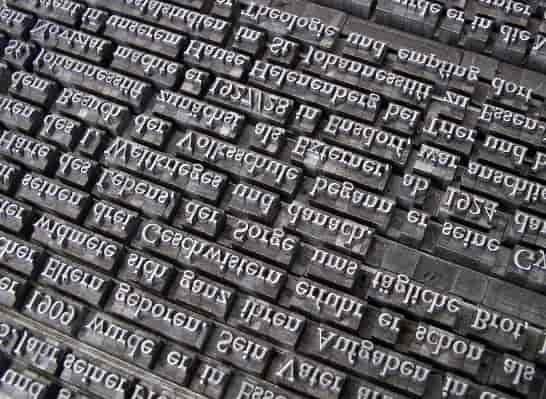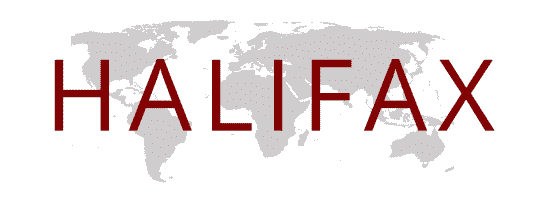Professional Translation Services – Written documents
Halifax provides professional document translation services: reliably, efficiently, confidentially, on time. Our language services cover almost all language combinations.
What kinds of written translation services are there?
For written document translation services we use various procedures: we do not translate a novel in the same way as a letter, a law or a web site. How we organise a translation task depends on the purpose, the expected readers and context of the translation.
At one end of the scale, a contract needs an especially precise translation: whether it is a pleasure to read or not is far less important than whether lawyers judge it to be watertight. The translator must stick closely to the original and will re-phrase a passage only if really necessary.
At the other end, to translate an advertising slogan into a different language and culture, the translator may ignore the original text entirely and find new ways to express the same idea, so that the new audience will both understand and appreciate it in their cultural context.
Most tasks lie somewhere between these two examples, and for good translation quality, a balance should usually be struck. At Halifax we discuss the purpose of the translation with the client, and agree on the best approach to the job.
What languages do we translate?
The short answer is just about all. We work every day with English, German, Italian, French, Spanish, Danish, Russian and so on – every European language. Chinese, Arabic, Hebrew and Korean are also frequently requested. For especially unusual language combinations we can always find the right translator through our partners worldwide.
With our HQ in Belgrade, we have a specialty in Balkan languages.
At Halifax we translate a document into as many languages as you need. This can be done directly, or via a relay language, which is often more cost-effective. For example, translation to a less costly language then further to other languages can make a particularly economical solution. (Read more about prices.)
Read more about languages, and about our translators’ views of them.

Deadlines: how long do different translation services take?
The time a translator takes on a document depends on the document’s length and the kind of language it contains: some texts are just more demanding than others. A long-established average is around 8 translation pages (see below) in a normal working day.
Revising this for quality assurance may take about half of that time.
A large document that is urgently needed can be divided between a team of several translators who work at the same time. But while such a team will coordinate their work, each will have their own style and preferred vocabulary, so consistency may suffer. This can be addressed in a revision by a single translator. The revision also takes time of course, though it can be done at least partially at the same time as the translation.
As with all things, time, quality and price are linked, but at Halifax we make every effort to provide the best combination of document translation services for each client’s purpose.
Do translators have specialist knowledge of a client’s subject?
Yes.
Many translators have their special fields of knowledge. Halifax works with a large number of them to ensure the right ones for each job. Our speciality teams cover finance and banking, legal documents, legislation and administration, pharmaceutical and medical, technical, mining and many others. See our references, or ask us about your speciality.

How are document translation services measured?
Measuring written document translation
A document is usually measured by the number of pages, words or characters it contains.
In many parts of the world, calculation is done by the word.
In some regions, it is common to use the concept of a translation page, which has a standard number of characters: 1,500 not counting spaces, or 1,800 with them. For some languages, a translation page may be defined as 250 words.
BEWARE! When comparing prices, be careful about the unit of measurement. These figures (1,500 and 1,800) are an unwritten industry standard, but not everyone uses them. Some companies offer “lowest prices” with smaller page sizes: obviously, ¾ kg of apples ought to be cheaper than 1kg.
Word processors like Microsoft Word, Libre Office Writer or WPS Office have counting functions. Some applications differ a little in their count (even between versions) so to be sure we define our count in terms of MS Word 2010 (which in our experience also corresponds to the count in WPS).

The method we use depends on the language and type of original document (the source document). If the source document is in open electronic format such as a .docx file, the word or character count can easily be made so that an exact price can be offered to the client. If the source is on paper or in a locked electronic format such as jpeg, and therefore not easy to count, it is usual to offer a price per page of the translated document (the target document) which will be easily countable. The source document will usually be converted to an open format using a suitable application as part of the translation project management process.
You should be aware of whether an offer is made on the basis of source or target text. Some languages (like Spanish) use more words than others, which can make a considerable difference to the final count and your bill.
Measuring certified document translation
Certified document translation is a bit different, as one of the essential products is the stamp, which provides official responsibility for the accuracy of the translation. These documents are usually measured by the physical page if they are certificates, diplomas etc. Two stamped and signed copies are usually delivered.
Read more about certified translation.
How are professional translation services organised?
Defining the project
In professional translation services, each job is called a project. A project starts when a client makes an enquiry, and one of our project managers asks all the questions needed to make sure everything is clear. This can cover the language combination, the urgency, the type of text, the purpose of the translation and likely audience, and other services like formatting or desktop publishing. The client may also have a preferred glossary, terms they are used to using. This can be an explicit list of words and phrases, or examples of texts they have used before.
Making an offer
Having determined the services needed, the project manager prepares an offer. This may be a simple quote for a small job, or a detailed written offer with all the specifications agreed. They may include the procedure to be used, the measurement principle, deadlines and prices. There may be variants offered with different prices.
Preparing the project
When the client approves, the project manager prepares the text. The source document may need converting to an open text file, or passing through a computer assisted translation (CAT) tool that has a pre-translation process.
The project is split into tasks. It may need more than one translator to meet the deadline, and a revision or a review may be required. Other services like desktop publishing may also be needed for graphic adjustment.
Identifying human resources
For each task, the project manager will identify a suitable person. Translators will have the right language combination and a suitable knowledge of the subject and its terminology.
If a revision is required, a reviser is chosen, usually a native speaker of the translated (the target) language. If a professional review is needed, a suitable professional is engaged. For some tasks, a more robust treatment may be requested and an experienced editor may be needed, a writer who will alter the text to achieve a desired effect in the target language and culture.
Many of these people are freelancers. Halifax works with a large number of them. Our project managers know them well, with all their abilities and special strengths, and they form a suitable team for each job.

Coordinating the work
For a complex task involving several specialists, the project manager will liaise between the team members, making sure there is communication around difficult issues, or to assist a standardised choice of special terms. If the text contains passages whose meaning is unclear, they will communicate with the client to clarify them.
Completing the package
As the translators finish and deliver their tasks, the project manager examines them and often passes them through a proofing tool to check for small errors. The final document is assembled and returned to the client.
Following up
The project manager checks that the client is satisfied with the result. If there are any problems, the text may be returned to a translator to check or change a phrase. There is often follow-up with the translators too – when a revision or editing has been performed, a version with tracked changes is returned to the translator so they can learn from it.
What different tasks can document translation services involve?
Document translation services can involve a range of tasks. Many of these are defined by the international translation standard ISO17100 (you can read more about this here.) Here are some of the more common ones.
1. Translation
The translator works from source to target language, taking care of:
- Meaning – the basic content the author wanted to convey
- Terminology – appropriate words and phrases for the subject
- Grammar
- Lexical cohesion – does the text flow nicely?
- Style – is it faithful to the style of the original?
- Register – the degree of formality
- Language variants – is it UK English or US? Or perhaps Jamaican?
- Local conventions – different regions in a country may use different ways of speaking
- Target group and purpose of the document.
2. Revision
Revision is a particularly important task in document translation services. It is a quality assurance mechanism in which a second translator makes a thorough re-reading of source and target texts, checking correspondence between them in all aspects, correcting mistakes and improving the text.
Revision is required for a translation to conform to the international translation standard ISO17100, and for very good reason. This is because a revision by a second translator is a must for any text that is intended for publication, or otherwise has to be of excellent quality.
See more about revision under quality assurance.
3. Editing
Editing is a more loosely defined term. It is often used for a revision in which the editor makes a more robust intervention, often changing the text so that it conveys the meaning or fulfils the purpose of the original better – sometimes better than the original did itself. Editing focuses on the final product rather than a comparison with the original.
Some clients ask us to edit texts such as articles so they better fit a particular magazine’s style or the different reading standards in a particular country, to change it from UK to US English or just to improve it. They may also ask for a text to be reduced to a smaller size while it still says essentially the same.
Write without fear. Edit without mercy.
― Unknown authorWrite drunk. Edit sober.
― Ernest Hemingway
4. Professional review
A professional review is a reading of the target text by a subject professional, to make sure that the terms, phrases and style used are good practice in the professional field. This could for example be a lawyer checking a translated contract, an electrical engineer checking a bill of quantities, or an art historian reviewing an exhibition text.
5. Back translation
Back translation involves having a different translator translate the text back again from the target to the source language. The result can then be compared to the original to make sure that no errors of meaning have crept in. This is often used for especially sensitive texts that must at all costs be error-free, such as user guidelines for medicines.
6. Proofreading
The word ‘proofreading’ has various definitions in professional translation services. Usually it consists of a final check of a text to make sure it is ready for e.g. printing (reading the printing “proofs”, in the original sense of the word proof as a trial before the main print run). This does not involve re-examining the source text nor the accuracy of a translation. Rather, it is a re-reading of the final text to spot obvious errors, grammatical mistakes, typos and other minor faults. A proofing tool can help in this.
7. Localisation
People who read a text in the translated language may have very different cultural norms. Even in similar cultures they may be familiar with different metaphors. Localisation is re-writing a text to take this into account, so the final message is a more effective one to achieve the purpose of the document.

8. Trans-creation
This is a rather clumsy word used for a particularly creative form of localisation. It is often used when you want to translate a web site. To translate a web site can be a particularly challenging task for a translator. There are a number of reasons for this.
Read more about translating a web site.
9. Copywriting, creative writing, or just writing
If you are not happy with your original text, we can provide the impact you need with a newly-drafted text in collaboration with your services. We are good at this.
A good text is planned for its readers and its purpose. Who will read it? After reading it, will they have to make a decision? Buy something? Handle a situation? Solve a problem? Change their attitude towards something?
Both what we write and how we write it are important: a bulldozer maintenance manual is very different from an advert promoting women’s care products or a financial report. We consider factors like these:
- Understanding the cultural background of the target group, and their position (an executive will not have time for the details the company’s expert staff will need to read)
- Deciding on the style to suit the purpose and target group
- Limiting the contents to the information the reader needs
- Organizing the contents in a reader-friendly way
- Explaining abbreviations or of technical terms.
This applies to practically all non-literary texts: memos, reports, letters, decisions etc. For highly formal texts such as laws and other regulatory documents, there may be more restrictions on the contents and structure. However, they should still be clearly written and easy to read.
10. Formatting and Desktop Publishing (DTP)
For many purposes, the exact format of a document is not important to reproduce in the translation. We do, however, seek to reproduce enough of the original format to make it easy to compare the original and translated texts: headings, paragraphs etc. If the client needs a more precisely matching format we can also provide this.
If the original document is provided in a locked format like an image or a scanned pdf file, the translator has to spend time re-formatting the document. If the format is a complex layout, this may make our price offer a little higher, as we have to pay the translator for their time, though we always try to avoid this.
For really complex document layouts, the translated text may have a different length, read from right to left or vertically, and may need fitting to other aspects of the document (images, layouts). A translator is focused on language, and is not usually an expert in manipulating layouts. For this purpose we work with DTP experts.
What if I am not satisfied with the translation?
We make every effort to provide high-quality document translation services, but we know that everyone can make a mistake. If you feel that our translation is not as good as you expected, you are welcome to contact us at any time. Our project manager will re-examine the translation and try to identify the cause of the trouble.
Insufficient quality may be due to mistakes made by a translator. In this case the project manager will send the text back to the translator to change it, or they may send it to a second translator to check the quality: if it seems to be inadequate for the purpose, it will be revised. Poor quality may, however, be due to other factors.

A key to success
The initial agreement between the project manager and client is a key moment: making the right agreement depends not only on the project manager’s skill but also on the client. The choice of procedure should always ensure enough time and resources, and should provide sufficient information for the translator to find the right style.
For example, translation by a single translator is simply never suitable for an important text, such as one that will be published. For this purpose, a text by even the best writer will often need to be revised and proofread several times before it is ready for publication. This is why the international document translation standard insists on a procedure involving revision by a separate translator for professional translation services. But we must pay people for their time: though we may do our best, we cannot sell you a Mercedes for the price of a Fiat.
Information as to how the text will be used, and who will read it, is also useful. Simple statements such as: “please make sure every detail is precisely translated”, “use a bit of imagination to make the point towards American readers” or “our readers are likely to have a limited technical knowledge” can be of immense help to focus a translator.
Whatever the reason for your disappointment, you should try to identify exactly what you are unhappy about. The better we understand your needs, the faster we can correct any mistakes.

